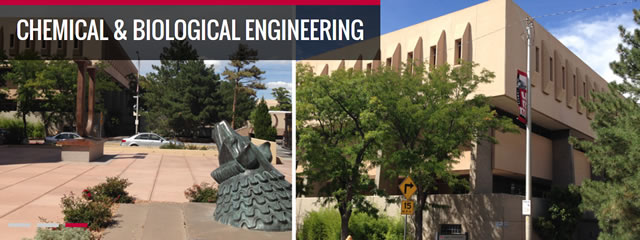
Chemical and Biological Engineering ETDs
Publication Date
Spring 5-13-2025
Abstract
This thesis focuses on the guided self-assembly of metastable nanomembranes (NMs) that are either amorphous or polycrystalline. Guided self-assembly of NMs is a robust and scalable method to obtain a variety of three-dimensional structures such as helices, rolled-up tubes, and networks of interconnected channels. These 3D structures have important applications as on-chip actuators, sensors, inductors, transformers, waveguides, and antennas. Furthermore, a large amount of strain and strain gradient can be imparted in NMs by bending them to a nanoscale and microscale radius of curvature, making guided self-assembly on NMs a viable route to extreme strain engineering of amorphous and polycrystalline NMs.
Leveraging the tremendous potential of self-assembled NMs requires precise predictive control of their geometrical attributes, such as the diameter of rolled-up tubes, the diameter and pitch of helical structures, and the cross-sectional area of wrinkled channels. The last 20 years have shown much progress in controlling the self-assembly of single-crystalline and stable films, such as semiconductors. Nevertheless, there is a limited understanding of the relaxation of metastable amorphous and polycrystalline NMs. This work aims at filling this knowledge gap by a multidisciplinary approach that encompasses synthesis and processing of NMs, continuum mechanics modeling, and characterization of the structural and functional properties of the NMs.
Central to this effort is predictive modeling of the mechanical response of amorphous and polycrystalline NMs upon relaxation of residual stress in the deposited layers and any additional stress arising from the reconfiguration of atomic bonds under an externally applied stimulus, such as heat.
The thesis describes the application of the model to two selected case studies and systems, namely complex oxide and metal NMs. After heating, reconfiguration-driven assembly is observed in strontium titanate (STO) and Cr/Au/Cr heterostructures. Specifically, STO-based scrolls form into swiss roll structures due to the densification of the complex oxide layer, as measured by x-ray diffraction. End-tethered Cr/Au/Cr NM ribbons assemble into helices of uniform diameter and pitch as a result of plastic changes in the heterostructure during annealing.
Keywords
nanomembranes, self-assembly, reconfiguration, mechanical modeling, helices, metals
Sponsors
AFOSR, NSF, DOE
Document Type
Dissertation
Language
English
Degree Name
Chemical Engineering
Level of Degree
Doctoral
Department Name
Chemical and Biological Engineering
First Committee Member (Chair)
Dr. Francesca Cavallo
Second Committee Member
Dr. Tito Busani
Third Committee Member
Dr. Sang M Han
Fourth Committee Member
Dr. Nathan Jackson
Recommended Citation
Prakash, Divya Jyoti. "Reconfiguration-Driven Assembly of Inorganic Nanomembranes." (2025). https://digitalrepository.unm.edu/cbe_etds/92
